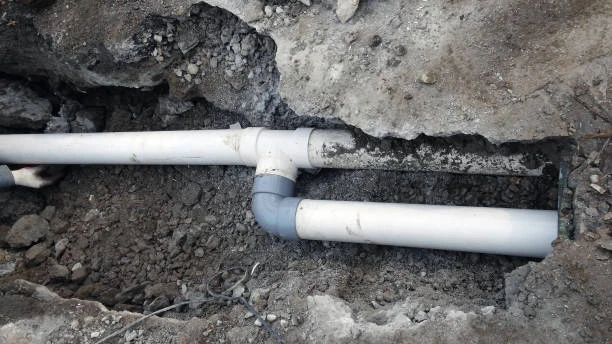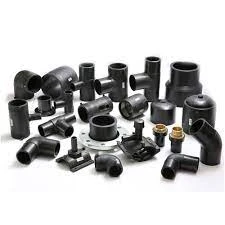The High-Density Polyethylene HDPE pipe market is experiencing significant growth due to increasing demand across various sectors, including water supply, sewage management, gas distribution, and telecommunications. As industries and municipalities seek durable, cost-effective, and environmentally friendly solutions for their piping needs, HDPE pipes have emerged as a popular choice. This article will delve into the factors driving the growth of the HDPE pipe market, the latest trends, and the future outlook.

Understanding HDPE Pipe
What are HDPE Pipe?
High-Density Polyethylene pipes are made from thermoplastic materials known for their high strength-to-density ratio. HDPE pipes are lightweight, flexible, and resistant to corrosion, making them ideal for various applications. Their ability to withstand harsh environmental conditions has made them a preferred choice in both urban and rural settings.
Benefits of HDPE Pipe
- Durability: HDPE pipes have a long lifespan, often exceeding 50 years, and can endure extreme weather conditions without degrading.
- Resistance to Chemicals: Unlike traditional materials, HDPE is resistant to a wide range of chemicals, making it suitable for transporting various substances.
- Low Maintenance: The smooth surface of HDPE pipes reduces friction, minimizing the need for maintenance and ensuring efficient flow.
- Environmental Friendliness: HDPE is recyclable and contributes to sustainability. Its production requires less energy compared to other materials.
Factors Driving Market Growth
1. Increasing Urbanization
The rapid pace of urbanization is a significant driver for the HDPE pipes market. As cities expand, the demand for reliable infrastructure, including water supply and sewage systems, rises. HDPE pipes, with their flexibility and durability, are ideal for urban environments.
2. Infrastructure Development
Governments worldwide are investing in infrastructure development to improve public services. Projects related to water distribution, sewage treatment, and gas supply are on the rise, further fueling the demand for HDPE pipes.
3. Shift Towards Sustainable Solutions
The global focus on sustainability is influencing the choice of materials in construction and utilities. HDPE pipes, being recyclable and environmentally friendly, align well with these sustainable goals, attracting more projects and investments.
4. Advancements in Technology
Innovations in HDPE pipe manufacturing and installation techniques, such as trenchless technology, have made HDPE pipes more attractive. These advancements reduce installation time and minimize environmental impact, contributing to market growth.
Emerging Trends in the HDPE Pipe Market
1. Smart Technology Integration
With the rise of the Internet of Things (IoT), the integration of smart technology into HDPE piping systems is gaining traction. Smart sensors can monitor water flow, detect leaks, and optimize maintenance schedules, enhancing the efficiency and reliability of HDPE pipes.
2. Growth in Agricultural Applications
The agricultural sector is increasingly adopting HDPE pipes for irrigation and water management. Their resistance to chemicals and flexibility makes them suitable for various agricultural applications, contributing to increased crop yields and water conservation.
3. Use of Recycled Materials
The push for sustainability has led to a growing trend of using recycled HDPE in pipe manufacturing. This not only reduces the environmental footprint of production but also addresses the demand for sustainable materials in construction and utilities.
4. Expansion in Emerging Markets
Developing regions, particularly in Asia-Pacific and Africa, are witnessing rapid growth in the HDPE pipe market. Increased investments in infrastructure, urbanization, and industrialization in these areas are expected to drive demand significantly.
5. Customization and Specialized Products
Manufacturers are increasingly offering customized HDPE pipes tailored to specific applications. Specialized products, such as those designed for high-pressure applications or unique environmental conditions, are gaining popularity.
Challenges Facing the HDPE Pipe Market
Despite the positive trends, several challenges could hinder the growth of the HDPE pipes market:
1. Competition from HDPE pipe Alternative Materials
While HDPE pipes have numerous advantages, competition from alternative materials, such as PVC and ductile iron, can impact market growth. Each material has its own set of benefits, which can make it challenging for HDPE to dominate certain applications.
2. HDPE pipe Regulatory Hurdles
Compliance with various regulations and standards can pose challenges for HDPE pipe manufacturers. Stringent quality control measures and environmental regulations require manufacturers to invest in testing and certification processes.
3. HDPE pipe Market Volatility
Fluctuations in raw material prices, such as petroleum, can affect the production costs of HDPE pipes. This volatility can impact pricing strategies and profit margins for manufacturers.
HDPE pipe Future Outlook
The future of the HDPE pipe market looks promising, with continued growth expected in various sectors. The increasing focus on sustainability, coupled with advancements in technology, is likely to create new opportunities for manufacturers and suppliers.
Key Areas of HDPE pipe Growth
- Water Management: The need for efficient water distribution systems will drive demand for HDPE pipes, especially in regions facing water scarcity.
- Gas Distribution: As natural gas consumption rises, HDPE pipes will play a crucial role in transporting gas safely and efficiently.
- Telecommunications: The growing demand for high-speed internet and telecommunications infrastructure will increase the use of HDPE pipes for fiber optic installations.
- Industrial Applications: Industries such as mining and chemical processing will continue to utilize HDPE pipes due to their chemical resistance and durability.
Conclusion
The HDPE pipes market is witnessing substantial growth driven by urbanization, infrastructure development, and a shift toward sustainable solutions. With emerging trends like smart technology integration and the use of recycled materials, the future of HDPE pipes looks bright. As challenges are addressed and innovations continue, HDPE pipes will remain a vital component of modern infrastructure.
FAQs
- What are the main applications of HDPE pipes?
- HDPE pipes are primarily used for water distribution, sewage management, gas distribution, irrigation, and telecommunications.
- How long do HDPE pipes last?
- HDPE pipes typically have a lifespan of over 50 years, depending on environmental conditions and maintenance.
- Are HDPE pipes environmentally friendly?
- Yes, HDPE pipes are recyclable and produced with less energy than many alternatives, making them a sustainable choice.
- What is the role of technology in the HDPE pipe market?
- Technology advancements, such as trenchless installation methods and smart monitoring systems, enhance the efficiency and appeal of HDPE pipes.
- What challenges does the HDPE pipe market face?
- Challenges include competition from alternative materials, regulatory hurdles, and market volatility due to fluctuating raw material prices.


















